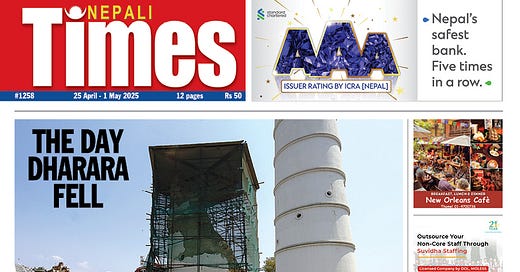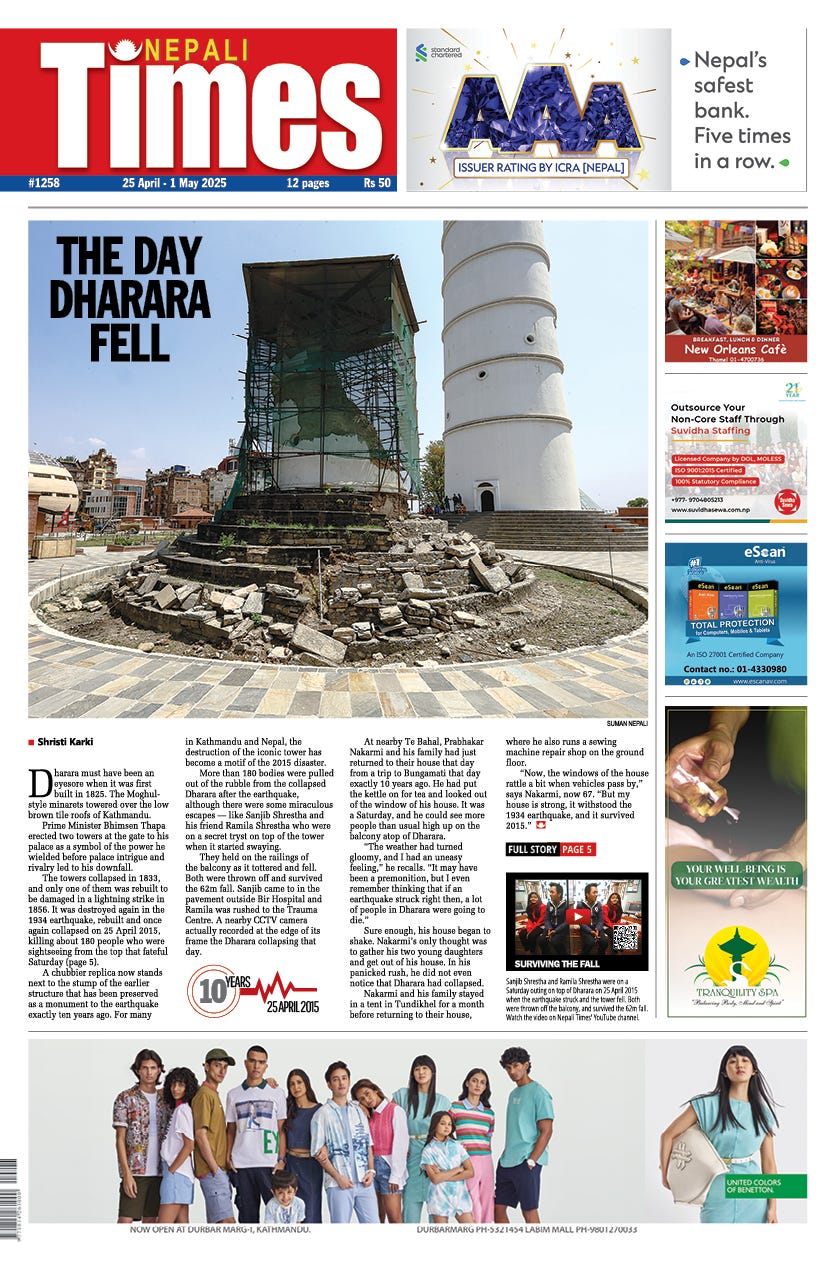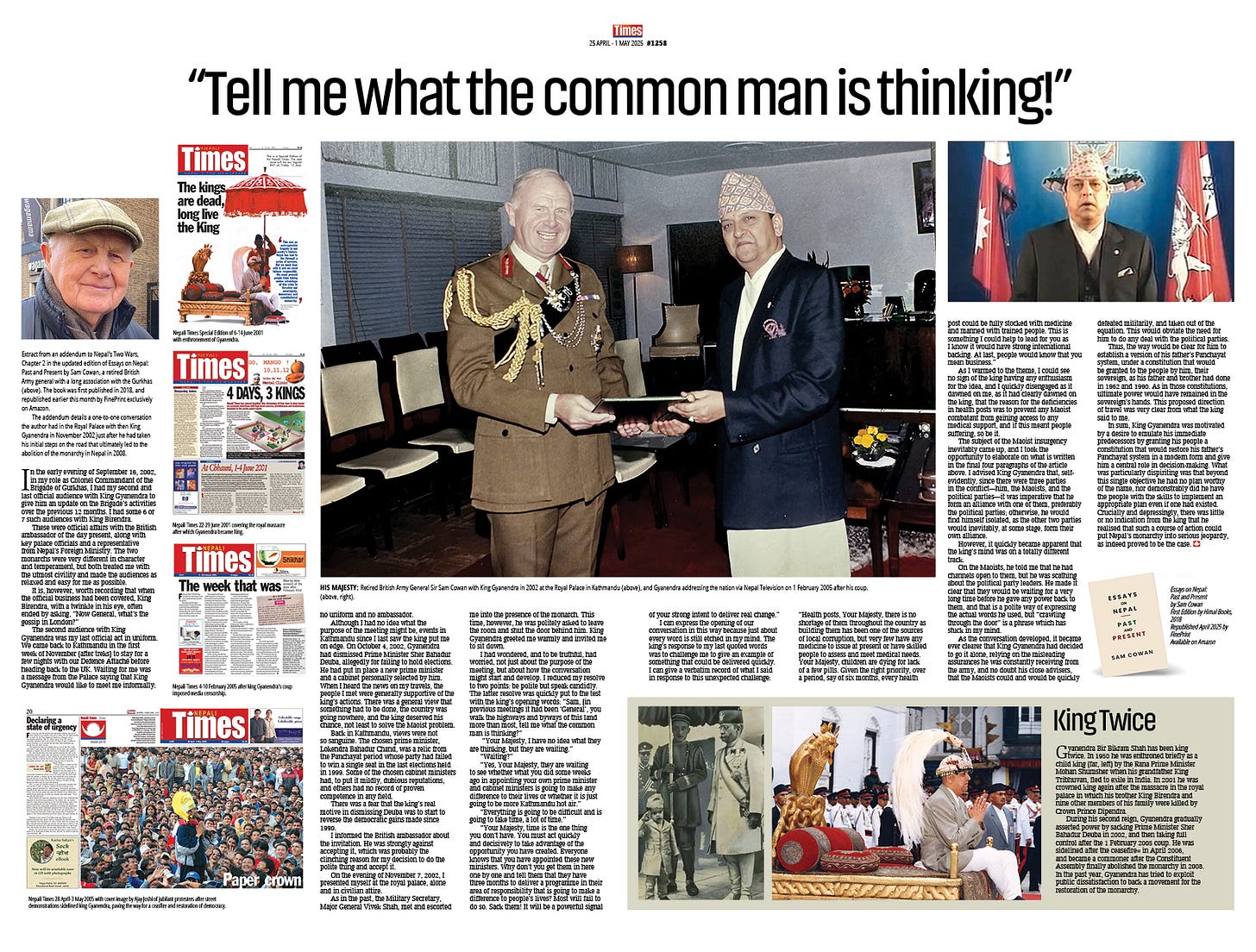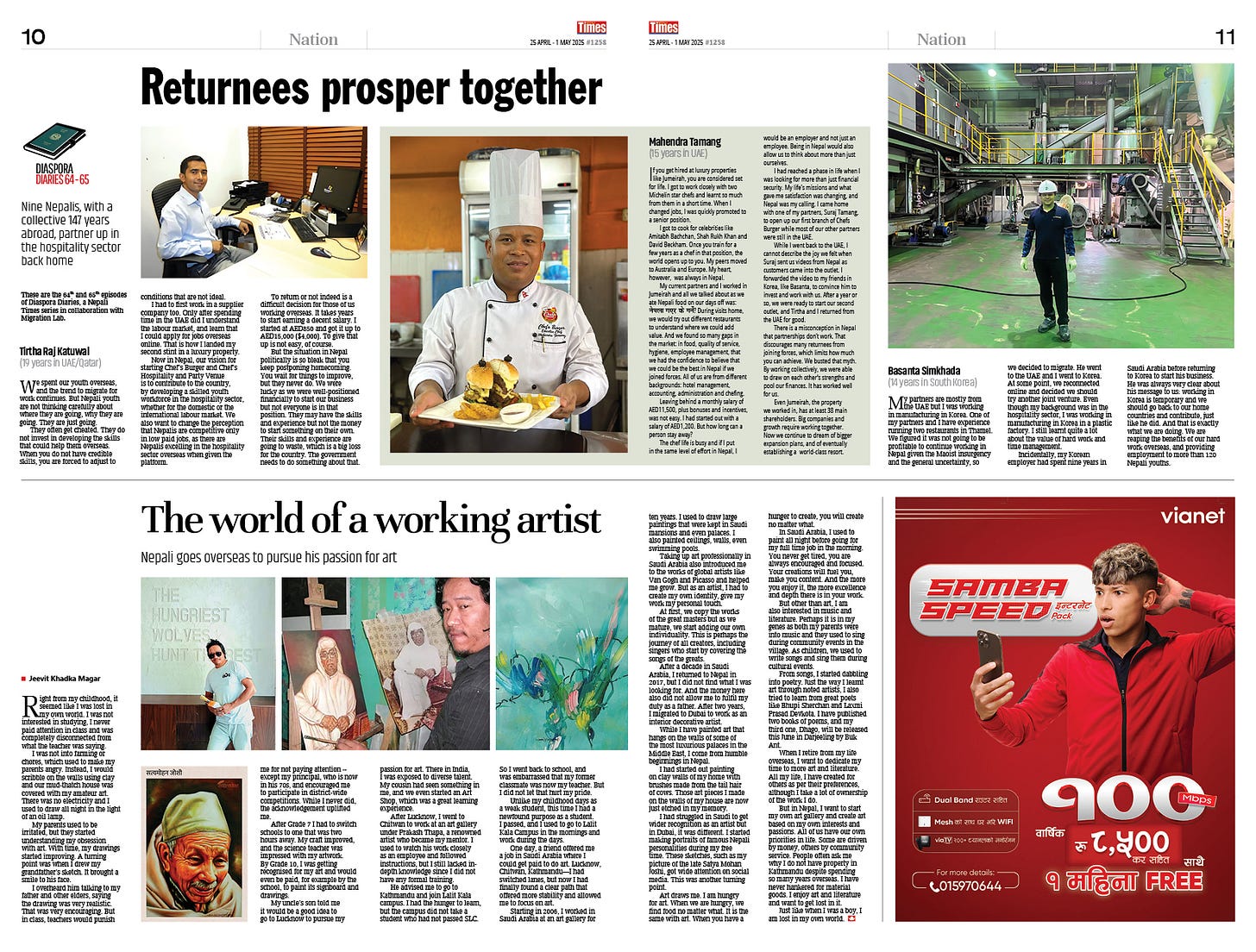Hi there,
Now that summer is here, most of you must have been woken up at midnight by the high pitch whine of mosquitos. Yes, they’re back. Equipped with heat-seeking infrared sensors, they can dive bomb you even in the dark.
While we regard them as a nuisance today, we have these heroic malaria-carrying female anopheles to thank for defending the country’s territorial integrity from invasions by the South and North. Mosquitos are the reason Nepal was never colonised.
Our glorious Royal Mozzie Army ambushed sepoys from the East India Company when they tried to attack the Gorkhali Fort in Sindhuli Garhi in 1767, and troops of the Qing Emperor who had advanced up to Betrawati in Nuwakot in 1792.
Both empires were stopped in their tracks because our brave mosquitos risked life and limb to inject the enemy with the Plasmodium falciparum parasite.
Today, instead of using Good Knight or Odomos (Registered Trade Marks) to repel these insects, we should be erecting giant concrete statues of mosquitos at all major national highway intersections.
Nepal had deployed a clandestine biowarfare division to defend our territorial integrity long before modern armies started using weapons of mass destruction. Think of that before you swat a pesky mosquito in the coming months.
But I digress. This Friday’s Nepali Times came out on the exact day of the 7.8M earthquake exactly 10 years ago on 25 April 2015. How quickly time flies, and how quickly we have forgotten the horrors of that fateful day.
On page 1 and 5, Shristi Karki reminds us by going back to Dharara to speak to eye witnesses who saw the tower fall, killing dozens of visitors on a Saturday outing on the 62m high viewing platform. Some even survived the massive collapse. Read story (Towering Monument to 2015) and watch video on our YouTube channel.
The Editorial this week is a repost of a blog I wrote ten years ago for the BBC Academy Blog analysing how truth was a casualty in rush to formulaic international coverage of the Nepal earthquake. Seeing how the Burma disaster this month was covered, not much seems to have changed (Disaster Journalism, page 2).
On page 4, Chandra Kishore dissects the recent communal violence in Birganj and how the city has still not returned to normal, as Nepal feels the impact of what is happening across the border (Sociology of Social Unrest).
The centrefold this week is an excerpt from the new edition of retired British Army general Sam Cowan’s book Essays on Nepal in which he recounts a meeting with king Gyanendra in 2002 during which we see a hint of his tendency to go it alone (‘Tell Me What the Common Man Is Thinking!’, page 6-7).
This week Nepali Times carries a double billing of Diaspora Diaries with stories of how nine Nepalis who have collectively spent 147 years abroad, returned to invest in a thriving restaurant business (‘Returnees prosper together‘, page 10-11). And the story of a Nepali migrant worker who pursues his passion for art in the UAE (‘The world of a working artist‘).
The back page is a profile of a French migrant worker in Nepal, François Driard, who has similarly carved out a niche in the country’s food sector. Fromage, vin et charcuterie Népalais. Page 12.
Bon appétit, and happy reading.
Kunda Dixit






